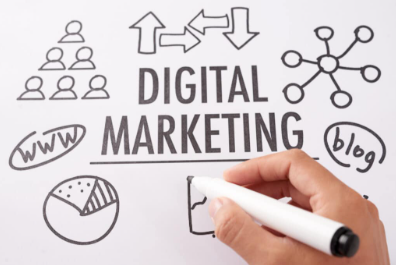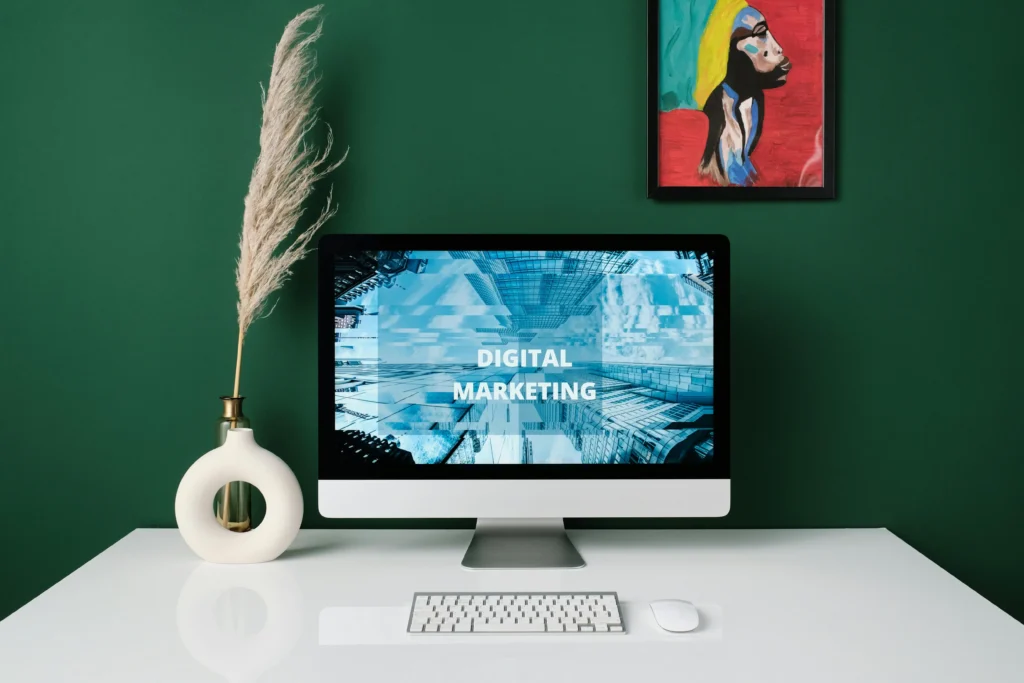Most industries are still content publishers and still use the mainstream outlets such as TV and slick print media. As the synchronization of time and technology ratchets up the speed of content production and consumption, the digital domain in which things are most coveted has moved to social media—TikTok, of course. Other kinds of social media are up, essentially filtering in, increasingly. They are reshaping the art of influencing by introducing new mechanics of grasping and holding our attention on a platform like Instagram.
Table of Contents
ToggleWhy Digital Advertising Is Outpacing Traditional Channels
Digital advertising comes into the game, as this is where people’s time is spent nowadays. Think about how often you pick up your phone during a single day. All of those moments are chances for a brand to interrupt. A billboard goes by once, but digital ads stick around—showing up across feeds, apps, and even searches.
Another reason? Numbers don’t lie. Today’s marketers do not roll the dice anymore to check if their ad is effective. They track it and know how many people clicked, how many bought, and even how long someone hovered over a video. Real-time feedback makes it easy enough to adjust campaigns on the fly. Old media can’t keep up.
And let’s be real—it’s also lighter on the wallet. A small business can run a few test commercials on TikTok or Facebook for a fraction of the price of one TV commercial.
Social Media Advertising: The Crown Jewel
Social media is the real deal; almost nine times out of ten, that’s the answer given for which advertising is growing the fastest. In this decade, social media is where conversation takes place, purchasing decisions are made, and cultural phenomena are even born.
What compels these ads to click? They blend with everyday use. The TikTok ad scrolls just like a regular post for a seamless experience compared to blaring commercial breaks. That natural flow builds trust and keeps viewers.
Targeting is another big win. Imagine wanting to reach sneaker-loving 25-year-olds in St. Petersburg who also game online. Social ads can do that in minutes. Compare that to the scattershot approach of print or radio—it’s night and day.
Video Ads: Quick, Visual, and Shareable
Video has taken off in popularity because humans love quick, visual content. Whether on YouTube, Reels, or TikTok, videos have a good possibility of getting noticed in a matter of seconds. And should a company succeed in doing that—by wit, humour, or shock value—it gets some extra glory by viral sharing, when the audience becomes more active contributors to determining the last note.
You don’t have to sit down and watch because you catch a glimpse in the queue to get your coffee or while commuting on the bus. That gives brands more chances to hit hard and create an impression in seconds.
Influencer Marketing: Advertising with a Human Face
While social and video pace in breadth, influencer marketing paces in trust. Instead of blowing their own horns, brands work with people their audience already knows and trusts.
Not every influencer needs millions of fans. Micro-influencers with smaller but loyal followings actually spark more passionate engagement. Why? Because their recommendations seem genuine—a friend’s suggestion instead of an ad.
At the core, it comes down to trust. People believe people more than they believe brands. If your favorite content creator casually referred to a product, it would seem to you as advice, not a sales pitch.
Data-Driven Personalization
Digital advertising also thrives because it’s smart. Personalization has gone from “nice-to-have” to expected. Algorithms now suggest products before you even type a search. Browse sneakers today, and tomorrow you’ll see shoe ads. Look up “best beaches,” and don’t be surprised when vacation deals follow.
This isn’t just clever—it saves money. Instead of wasting spend on uninterested viewers, brands show relevant ads to people already leaning in. For the user, it feels less like random spam and more like, “Oh, that’s actually useful.”
The Future of Quick-Evolving Advertising
So, what is the next step for this train? The future of advertising is already planning more AI-driven campaigns, AR and VR immersive experiences, and interactive ads where you can shop without leaving the app.
The shared factor? Simplicity. Shoppers don’t need to jump through hoops. They require fast answers, brief value, and easy checkout. Those brands that provide that frictionless experience are the ones that will be ahead in the competition for the digital ad space.
Final Thoughts
So, what is the fastest-growing type of advertising? No doubt, it’s digital. From video snippets to influencer shoutouts, digital ads lead because they meet people where they already are. Businesses willing to lean in will stay ahead; those who ignore it risk falling behind.
We at GenTech Marketing help brands get noticed with campaigns that actually convert. We are the one-stop solution from data-driven targeting to creative campaigns. Do you want to grow your business with the most dynamic ad channels? Your next campaign can be the one that everyone talks about. Let’s do it.
FAQs
- What is the fastest-growing type of advertising?
Digital advertising—especially social media, video, and influencer marketing—continues to be the fastest-growing worldwide.
- Why is online advertising better than old media?
It’s measurable, affordable, and laser-targeted, allowing businesses to reach the right people at the right time.
- Is social media advertising a good fit for a small business?
Definitely. It’s affordable, highly targeted, and allows small businesses a fair chance to compete with larger brands.
- What’s next in advertising growth?
The future lies in AI personalization, influencer partnerships, AR experiences, and shoppable video formats.





